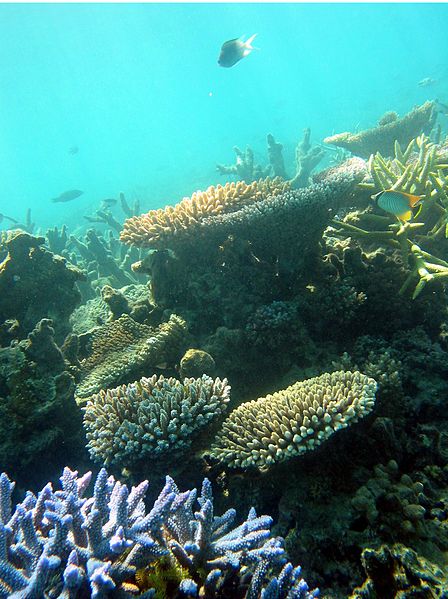Habitat and Geography
Bothus lunatus is found in many tropical and
sub-tropical locations in the Atlantic Ocean (Miller et al.
1991). In the eastern waters of the Atlantic Ocean, B.
lunatus is often found off Ascension Island and the Gulf of
Guinea. However, it is more commonly found in the western
Atlantic Ocean from Florida, Bermuda, and the Bahamas south to
Brazil. It is not found in the Gulf of Mexico (Florida Museum of
Natural History 2013).
The Peacock Flounder likes shallow waters, where it is able to
camouflage against the bottom. To learn more about this
flounder's ability to camouflage, visit the
form and function page. The clear sandy areas this
flounder inhabits could include mangroves, seagrass beds, coral
reefs, and rubble fields (Shedd Aquarium 2006; Florida Museum of
Natural History 2013). Although it is most commonly found
between depths of 1 and 64m, B. lunatus has been known
to reach depths of 100m (Miller et al. 1991; Florida Museum of
Natural History 2013).
 B. lunatus is the most common flounder found in coral
reefs,
an ecosystem that is exponentially diverse (Florida Museum of
Natural History 2013). In fact, coral reefs support such a high
level of biodiversity that they are often referred to as the
“rainforests of the sea”. To the right you can see a picture
demonstrating the great diversity found in coral reefs.
B. lunatus is the most common flounder found in coral
reefs,
an ecosystem that is exponentially diverse (Florida Museum of
Natural History 2013). In fact, coral reefs support such a high
level of biodiversity that they are often referred to as the
“rainforests of the sea”. To the right you can see a picture
demonstrating the great diversity found in coral reefs.
Coral reefs are built upon a structure of multiple species of coral piled on top of one another. Each species has a distinct shape and as layer builds upon layer, coral reefs become more and more complex. Several species of algae and sponges, such as the sponges Cryptotethya crypta and Plakortis simplex, grow on the reef surface and add to its complexity. This diverse reef surface contains many sources of shelter and food, so it provides an ideal haven for various organisms. Fish, turtles, rays, sharks, eels, crabs such as the Atlantic Horseshoe Crab, shrimps, urchins, bioluminescent ostracods like Photeros annecohenae, sponges, and algae are some of the creatures that can be found in coral reefs. Even among these organisms, there is a plethora of variation. For example, coral reef fish can range in size from just a few centimeters to over 1 meter in length (McGraw-Hill Education 2013).
The large amount of biodiversity
of coral reefs stems from the competition for resources such as
water, carbon dioxide, minerals, light, and space. Equilibrium is
very difficult to reach in a coral reef since species are constantly
evolving in attempt to out-compete one another. This continuous
competition and evolution is what leads to high biodiversity in
coral reefs (Connel 1978). To learn how the Peacock Flounder
interacts with the high diversity of coral reefs, feel free to visit
our
interactions page.
B. lunatus has several adaptations that help it compete in
this rigorous environment. Some of these adaptations include its
raised eyes, its swimming style, and its ability to bury itself in
the sand and change colors in order to camouflage with the
surroundings. If you would like to learn more about how B. lunatus has
adapted its form and function to fit its environment, click
here.
If you would like to go back to the home page, click here